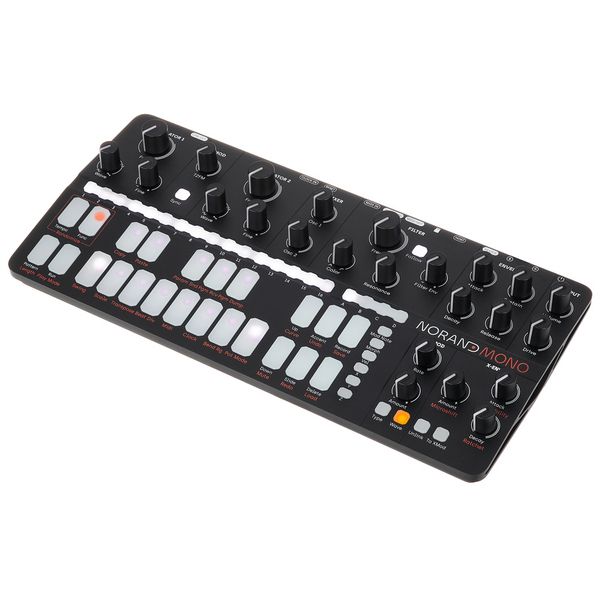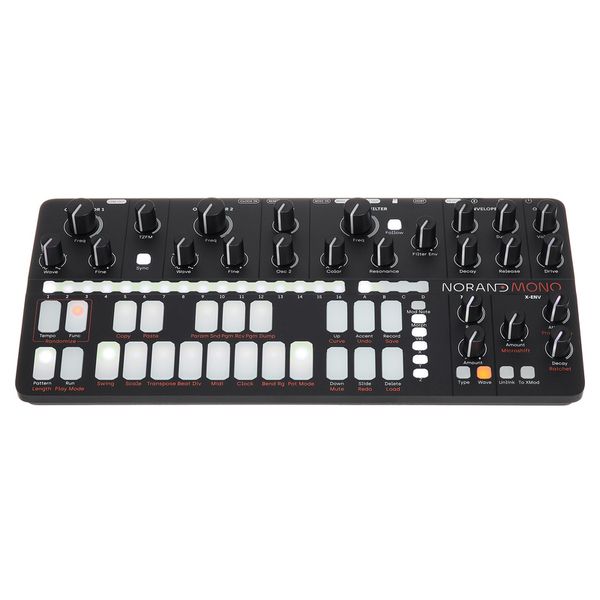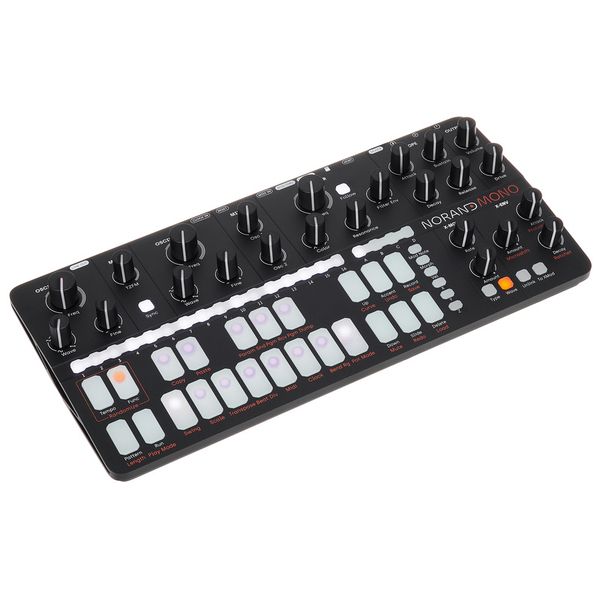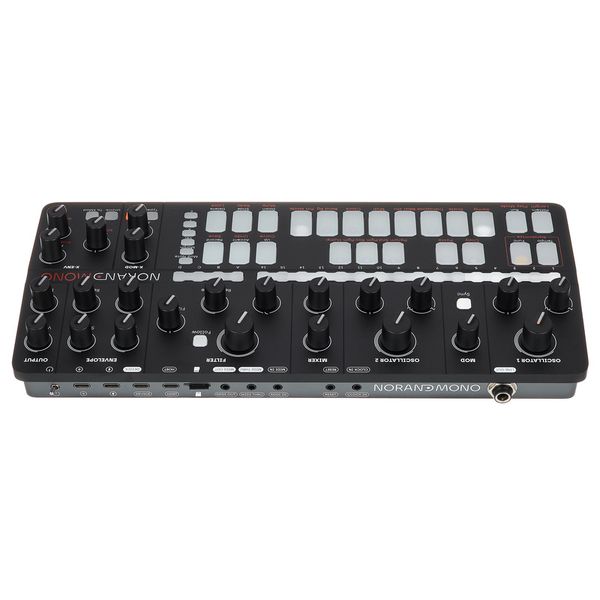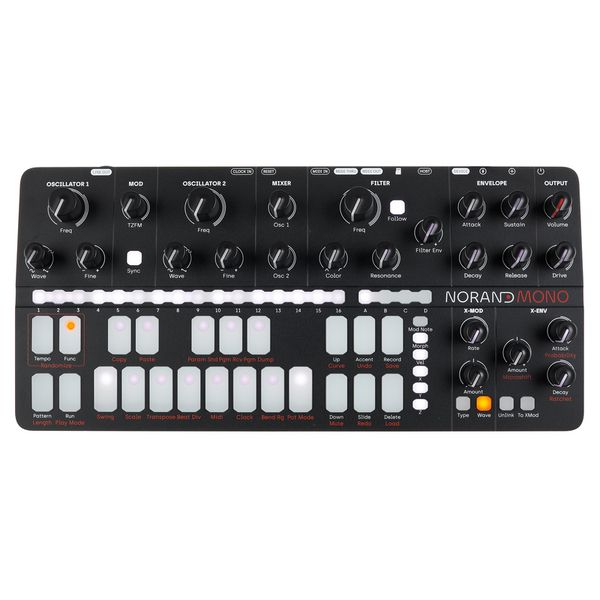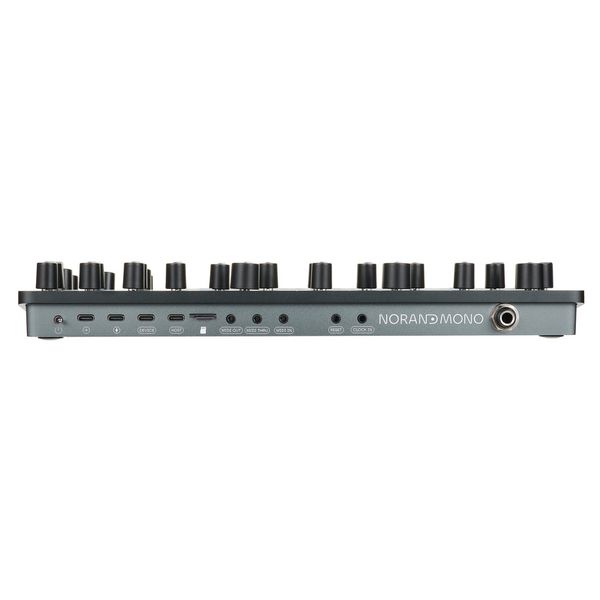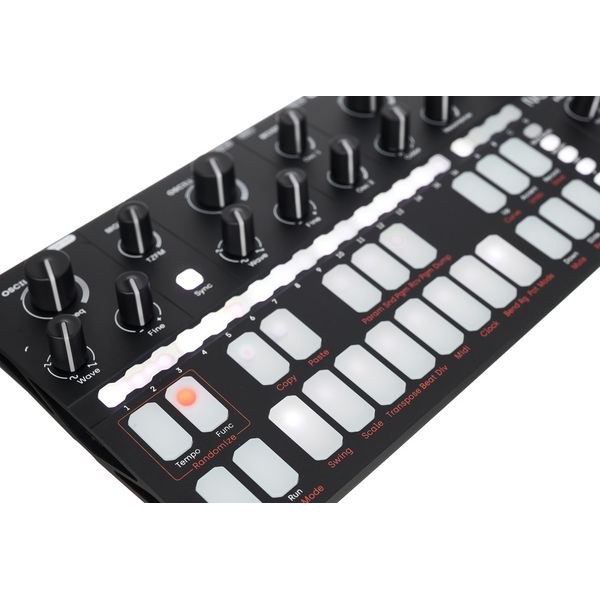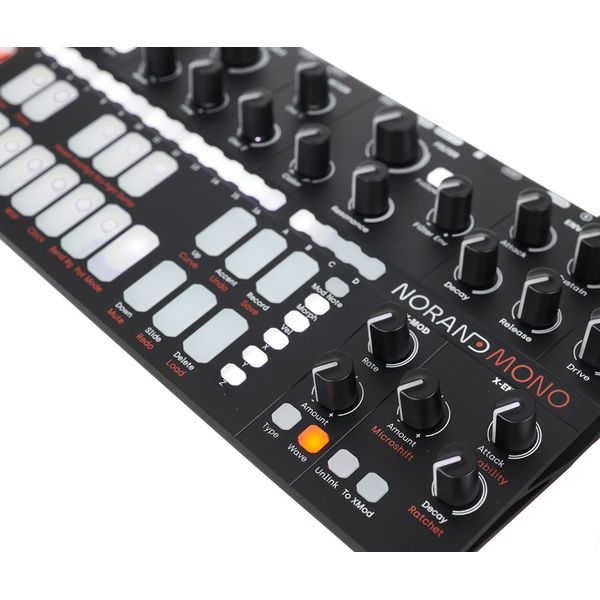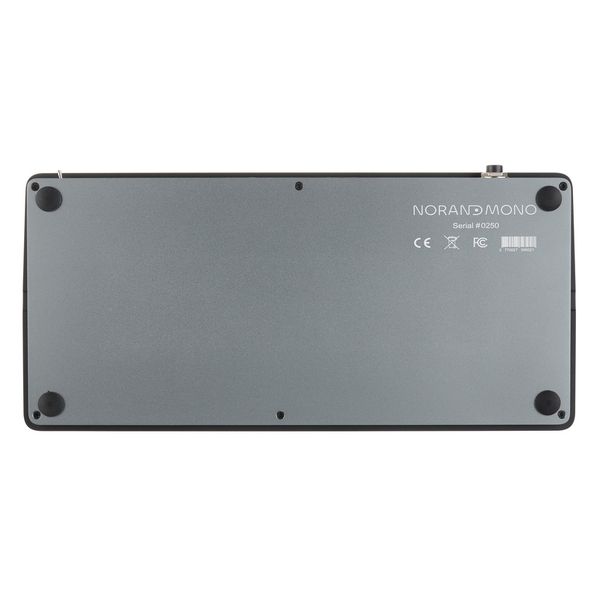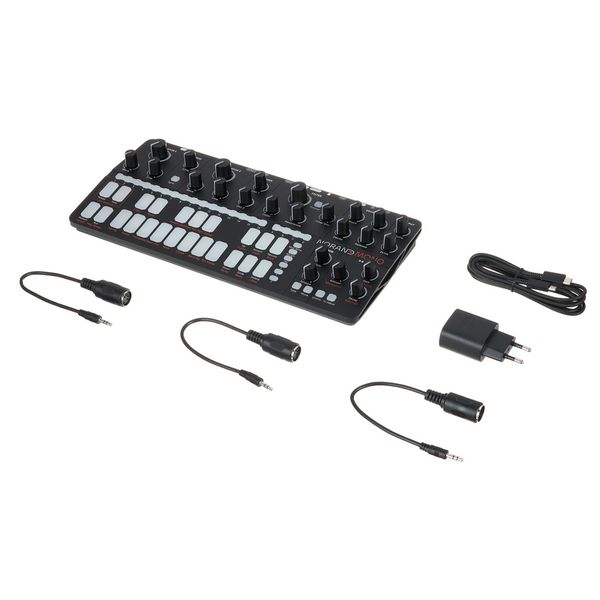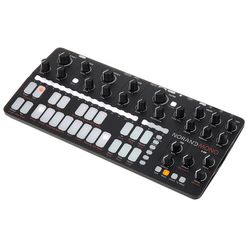Monophonic Analogue Synthesizer with Sequencer and Modulation Functions
- Fully analogue synthesis engine
- Two analogue oscillators with continuously adjustable waveforms
- Through-zero frequency modulation
- Hard sync function
- Filter overdrive
- 1x 3-Pole multimode filter
- Continuously adjustable filter colouring
- 1x ADSR envelope
- Soft overdrive
- 13 Dedicated AD envelopes
- 20 Multi-mode modulators
- Modulators: 5 waveforms, type settings: Free/Synced/Audio rate, Audio rate anti-aliased, quantised on OSC1, Free from 0.1 to 80 s
- Envelope: Decay segment from 10 us to 20 s
- Automation: unlimited number of projects on SD card
- 64 Patterns with patch memory per project
- Unlimited parameter automation per pattern
- 40 Mod notes per project
- Sequencer with up to 64 steps per pattern
- Undo-Redo function (up to 1024 actions)
- Various randomize options: Randomize step, parameter, mod note and more
- 64 Patterns with patch memory per project
- 23x RGB illuminated potentiometers
- 24x Illuminated buttons
- Output level: +15 dBu max.
- Output impedance: 200 Ohm
- Energy-saving mode for USB power
- Power supply: 5 V DC, 2 A
- Dimensions: 350 x 150 x 35 mm
- Weight: approx. 1.6 kg
- Incl. power supply unit, 3x MIDI adapters (3.5 mm mini stereo jack type A to 5-pin MIDI socket) and quick-start guide
Connections:
- 1 Main audio output: 6.3 mm jack, balanced
- 2 Eurorack clock/reset inputs: 3.5 mm jack
- 2 USB host/device: USB-C
- MIDI In/Out/Thru: 3.5 mm jack)
- MicroSD card slot
- Mains connection: USB-C
Available since
September 2023
Item number
569248
Sales Unit
1 piece(s)
Design
Desktop
Polyphony
1
Sound Generation
Analogue
MIDI interface
1x In, 1x Out, 1x Thru
Storage Medium
Internal, microSD
USB-port
Yes
Effects
No
Arpeggiator
No
Number of Analog Outputs
5
Digital Output
No
Display
No
Optional Expansions
N/A
Special Features
compact Design, Contextual Modulation
Show more





